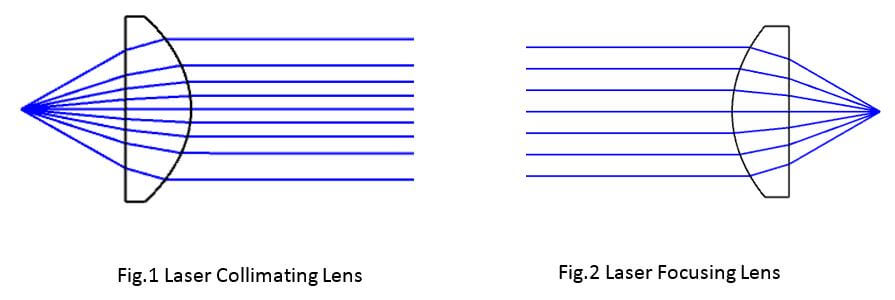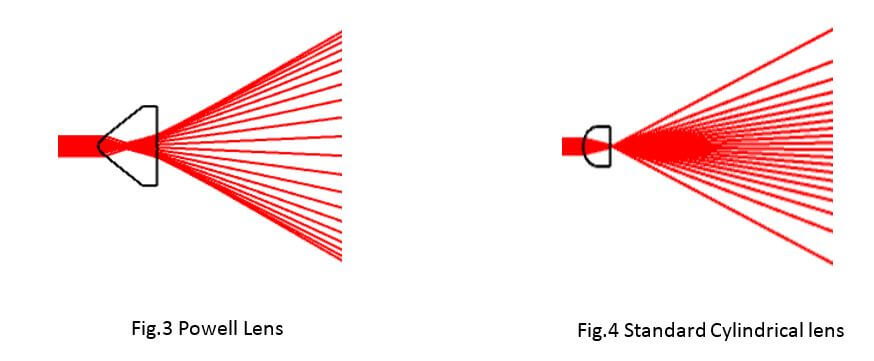Laser lenses are the optical lenses that are used in laser-based devices for a variety of laser applications such as but not limited to laser illumination, laser collimator, laser scanning, laser dimensioning, material processing, laser welding, laser cutting, laser tracking, line/ pattern generator, etc. Laser lens types include spherical lenses, aspherical lenses, cylindrical lenses, Axicon lenses, Powell lenses. Laser lenses are often offered with or without antireflection coatings deposited on their surfaces. Most common applications of laser lenses include focusing a laser beam into a small spot, generating a collimated laser beam from a laser source, creating a straight laser line from a collimated laser beam, and transforming a laser beam into a ring spot. The most popular laser lenses are described below.
A collimating lens, shown in Figure 1, is a lens which is used to generate a collimated laser beam from a laser source. The focal length of a laser collimating lens can be determined based on the laser divergence angle (FWHM) and the required laser beam diameter. A laser focusing lens, shown in Figure 2, is a lens which is used to focus a laser beam into a small spot. The focal length of a focusing lens is determined based on the input laser beam size, spot size, and required depth of focus. Laser focusing and collimating lens types include plano-convex lenses and aspheric lenses.

A laser line generator lens is a lens which is used to convert a collimated laser beam into a straight line. Powell lenses are widely used to convert collimated laser beams with Gaussian intensity distributions to straight, uniform lines. Compared to standard cylindrical lenses which produce laser beam lines with Gaussian intensity profiles, Powell lenses generate laser lines with much more uniform energy distribution across laser lines. To get the best quality of the laser line, the Powell lens needs to be optimized according to the laser beam size and the required divergence fan angle. Figure 3 shows a Powell lens and Figure 4 shows a standard cylindrical lens.

A laser ring generator lens is an Axicon lens (also called conical lens or rotationally symmetric prism) which is used to covert a collimated laser beam to a ring spot or focal line. An axicon has a conical rather than curved surface. A typical axicon lens, which is shown in Figure 5, has a plano-convex shape. An axicon lens can be designed and fabricated with a specific axicon angle or base angle based on the application requirements.
![]()
Shanghai Optics designs and manufactures high quality laser optics components and assemblies for a variety of laser system needs including CO2 lasers, high power fiber lasers, solid state lasers, laser diodes, etc. Shanghai Optics delivers high performance laser lenses covering wavelengths from UV to visible to near infrared to long wave infrared. Lens substrate opinions include BK7, H-K9L, Sapphire, UV grade fused silica, IR grade fused silica, calcium fluoride (CaF2), magnesium fluoride (MgF2), zinc selenide (ZnSe), Zinc Sulfide (ZnS), Gallium Arsenide (GaAs),germanium (Ge) and silicon (Si).